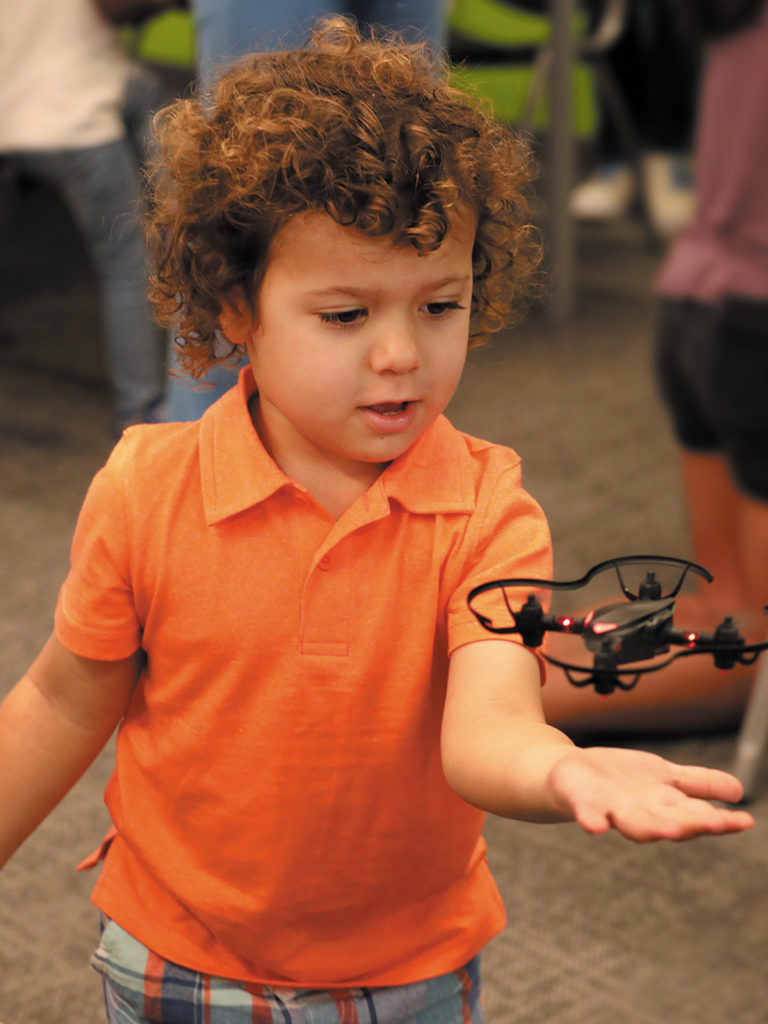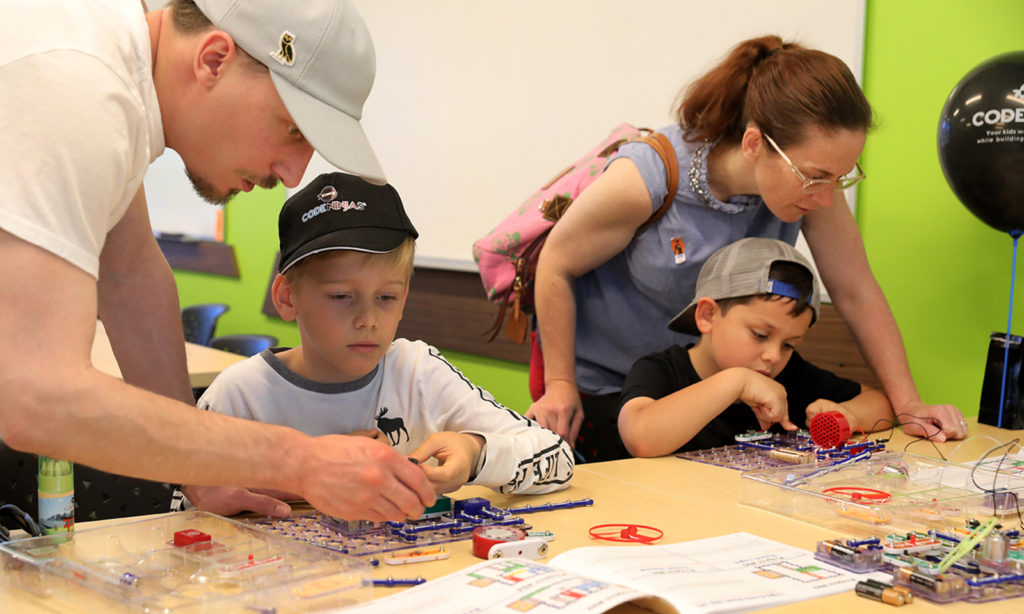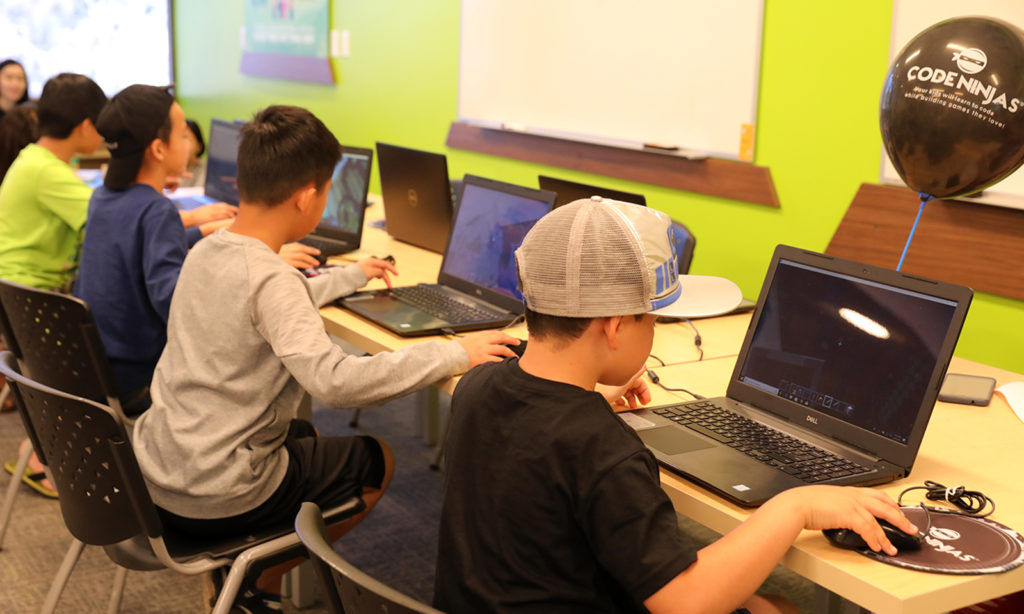You already know that your kids understand computers better than you, but did you know they also can write computer code?
At Code Ninjas, they can, and they are.
I went to the grand opening at Parkview Center in Irvine, and the place was packed with kids from ages 6 to 14. There are 100 Code Ninjas in the country and 300 more on the way, but this is the first one in Orange County.
The mission is to teach kids coding and logic and problem-solving in a fun environment. Kids who sign up for membership are ninjas. The coaches (six of the nine are UCI students) are senseis. And the classroom is their dojo.
As ninjas progress they earn belts, just like they do in martial arts. By the end of the first day, they will have created their first game. One 8-year old girl I met was excited to share that she had created a chase game between a ninja and a doughnut — in 30 minutes.
By the time you are a black belt, perhaps four years down the road, you will have created your own app that you can publish in the app store.

“Honestly, I wish I had this,” says Jamel Hopkins, a Code Ninjas sensei and freshman computer science major at UCI. “It’s intimidating looking at lines of codes.”
Code Ninjas has other, much more fun teaching methods.
The day I was there, a sensei was demonstrating how some coding was used to fly a drone around the room, to the delight of squealing boys.
Jonathan Cheung, whose day job is at a software company, decided to open a Code Ninjas because he wishes he learned to code as a youngster. Cheung was a strategy and financial consultant in Silicon Valley, servicing companies like Facebook and Cisco, before moving to Irvine.
“I always felt that if I had a better understanding of coding or STEM, it would have helped me in my corporate career, even as a business professional,” he says.
After-school STEM
Code Ninjas is essentially an after-school STEM program. Ninjas (students) can drop in from 3 to 7 p.m. on weekdays and 1 to 5 p.m. on weekends. They also can join summer camps.
“We don’t want kids to come here feeling like this is a class,” Cheung says. “They’re here to build video games and have fun. We disguise the curriculum.”
Irvine, by the way, employs nearly 30,000 residents in STEM-related fields. UC Irvine issues 3,000 STEM degrees each year. While Irvine high school students recently launched two satellites into orbit (with the help of Code Ninjas sensei Luke Dutta, who writes the communication code for those satellites).
Code Ninjas, though, is not just for kids who want to pursue STEM careers, Cheung emphasizes.
“Our mission is to expose any child to STEM and coding so those two words aren’t intimidating anymore,” he says. “We hope that kids can make informed decisions when they choose their majors in college. The logic and problem-solving skills gained from our curriculum are helpful for various career paths.”
Membership includes a portal for parents where you can see what games your child is building and track their progress — or you can play the game your child built.










